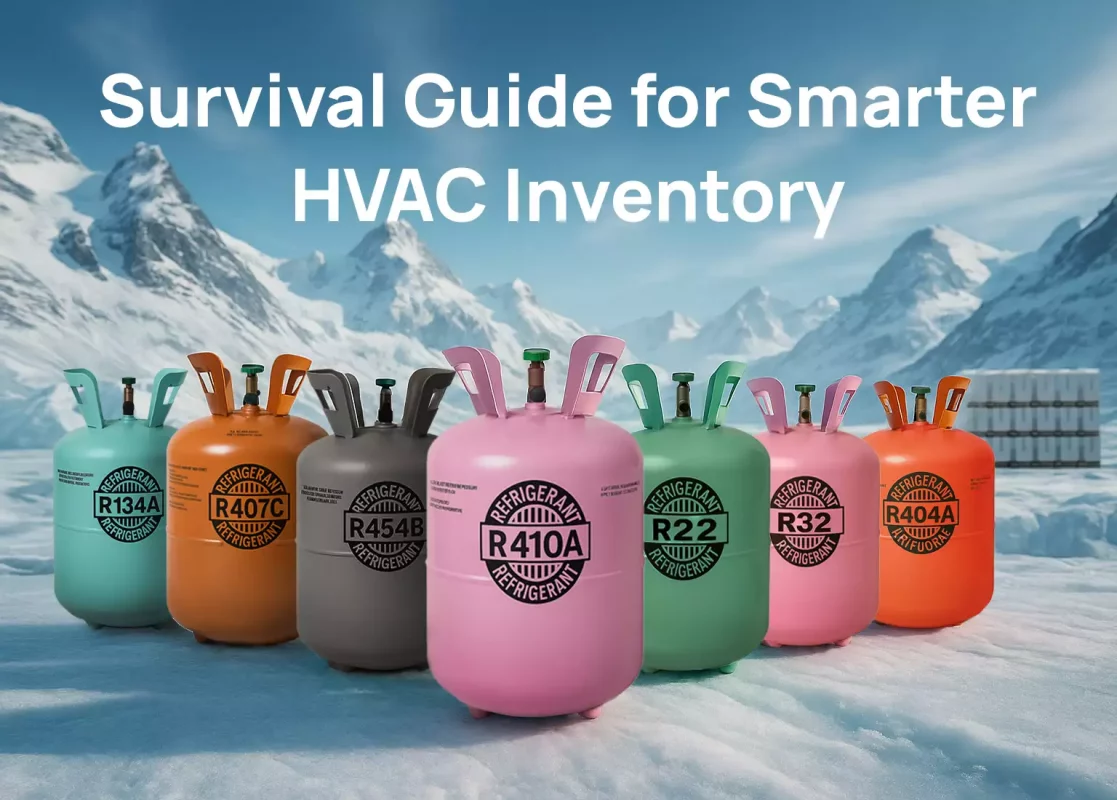Beat the Refrigerant Crunch: Your 2025 Survival Guide for Smarter HVAC Inventory
Feeling the squeeze? If you’re an HVAC pro or bulk buyer, the refrigerant landscape in 2025 isn’t just challenging—it’s a high-stakes obstacle course. Forget simple shortages; we’re navigating a perfect storm of accelerating HFC phase-downs, unpredictable global supply chains still recovering from years of disruption, and relentless seasonal demand spikes that hit like summer heatwaves. Finding essential refrigerants like R-410A and R-134a has become a scavenger hunt, and when you do locate them, the price tags are enough to make your toolbox rattle. Picture this: it’s the peak of cooling season, emergency calls are flooding in, and your shelves are bare. That’s the nightmare scenario smarter inventory planning aims to prevent.
Don’t just react to the crisis—outsmart it. Your shield against stock-outs and budget-busting price hikes is proactive, strategic inventory management. It’s about transforming uncertainty into a competitive edge. Here’s your battle plan:
-
Become a Data Detective:
Don’t fly blind. Dive deep into last year’s usage patterns – track the seasonal surges, the specific job types that guzzled refrigerant, and the unexpected emergencies that drained your reserves. Use this goldmine of data to intelligently forecast your 2025 needs. Then, add a strategic safety buffer (think 10-20%, depending on your risk tolerance and customer base) specifically earmarked for those inevitable urgent “no-cool” calls that can’t wait.
-
Master the Off-Season Advantage:
Waiting until spring to order is playing Russian Roulette with your supply. The smart move? Pre-order aggressively during the winter lull. This is when demand plummets, wholesalers have breathing room, and prices are often significantly softer. Locking in your crucial supply months ahead means you bypass the frantic summer scramble and its accompanying premium pricing and allocation limits. Think of it as buying your winter coat in July.
-
Embrace the Reclaimed Revolution:
When virgin stocks dwindle (and they will), reclaimed refrigerants aren’t just a backup plan—they’re a savvy, EPA-approved lifeline. Rigorously processed to meet AHRI 700 standards, high-quality reclaimed R-410A or R-134a performs identically to virgin product at a fraction of the cost, often with better availability during crunch times. It’s an eco-smart and wallet-smart strategy that builds resilience.
-
Stay Dialed Into the Market Pulse:
The refrigerant world moves fast. New regulations emerge, import quotas shift, and manufacturer announcements ripple through the supply chain. Make it a habit to consume industry news, follow regulatory updates (like EPA SNAP rulings), and track price trends religiously. This intel lets you pivot your purchasing before the market shifts beneath your feet, turning you from a passive buyer into a proactive strategist.
-
Forge Unshakeable Supplier Alliances:
In this volatile market, your relationship with wholesalers is your most valuable asset. Go beyond transactional purchases. Build genuine partnerships based on trust and consistent business. Strong relationships unlock benefits you won’t find online: preferential pricing, early access to limited allocations when shortages hit, flexible payment terms during tight months, and crucially, a supplier who prioritizes your call when everyone else is desperate.
The Bottom Line: While you can’t control global regulations or unkink every supply chain knot overnight, you wield immense power over your own preparedness. By adopting these strategic inventory practices and aligning with the right partners, you transform refrigerant volatility from a business-threatening crisis into a manageable variable. Stop scrambling. Start planning. Equip your business to weather the 2025 storm with confidence, ensuring you’re always stocked, ready, and profitable—no matter how wild the refrigerant rollercoaster gets. Your customers (and your bottom line) will thank you.
Your Next Step: Visit the EPA’s HFC Phasedown Hub for tools and state-specific rules.

